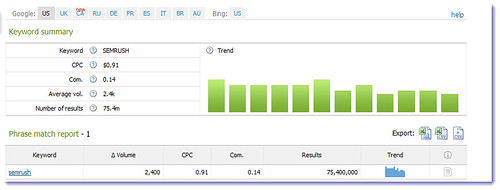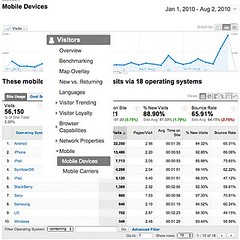If you’re new to SEO, you might be wondering how you can increase your online visibility. Luckily, there are a number of simple steps you can take to optimize your website and get your website on the first page of Google.
Long-tail keywords are easier to rank for than generic keywords
Long-tail keywords are a great way to make a good first impression and drive traffic to your site. They’re more targeted than generic keywords and often have a higher conversion rate. They’re also easier to rank for.
These keywords should be selected wisely. There are some simple strategies that will help you find and optimize for the best possible keywords. The first step is to use Google’s keyword planner. This tool will help you see what kinds of long-tail keywords are already being searched for. The second step is to create content to address these keywords.
The key to success with long-tail keywords is to ensure that they are relevant to your website. If your website is about a dog food merchant in San Diego, you may not want to target “dog treats” in your SEO strategy. However, you could use the word dogs in your post’s title. This is the same for a fitness website. A keyword such as “scissors” might be a better choice than the more generic “shoes.”
You can also try some of the more unusual methods, such as using video snippets in your blog posts and YouTube videos. This can be done as an additional feature of a post, or it can be used in conjunction with your other keyword-rich content.
Another cool thing to do is to answer questions that people are asking online. This is a good way to get your name out there, especially if you can find a forum thread or Quora question that you can use as a jumping off point.
A keyword tool like the one found on SE Ranking will help you identify and research long-tail keywords. This tool will also show you how to create an online marketing plan and track your competition. You can even take advantage of the Rank Tracker, which gives you comprehensive data on the search engine’s rankings and the competition for your long-tail keywords.
For more advanced SEO, you can also take advantage of tools like the SEMRush. This tool is part of Google’s Adwords program and can give you some insights into the competition for your long-tail keywords. You can also use the video snippets feature of Google. This allows you to include a snippet of a targeted keyword in a video, which can appear at the top of the SERP.
The trick is to create and write content that addresses long-tail keywords and related searches. This can help you achieve a better ranking for those keywords, and will result in an increase in traffic. If you’re willing to dedicate some time, it’s easy to rank for long-tail keywords. But remember that this is a long-term solution and won’t provide you with a torrent of traffic overnight. It’s important to have realistic expectations, and if you do, you’ll be rewarded.
On-page SEO
On-page SEO refers to the process of optimizing content on each page of your website. It is one of the many ways you can increase your search engine rankings. It is essential to have your website optimized as it will give you a boost in traffic and overall visibility. On-page optimization can also improve the credibility and trustworthiness of your site. It can be a great way to impress your customers and attract new visitors.
There are several steps that are needed to optimize your on-page SEO. These steps include content auditing, keyword research, and more. The first step is to find out which keywords your audience is searching for. Then, you can optimize your content using these keywords. By using these keywords, your website will be easier to rank.
Meta description tag
The second important on-page SEO factor is the meta description tag. You should have a focused keyword in the meta description. The tag is displayed in the browser tab so it is important to make it clear what your page is about. The length of the meta description should be limited to about 150 characters. Adding keywords and using a focus keyword helps Google understand your content.

The most important on-page SEO element is the title tag. The title tag gives the bots a quick look at what your page is about. The more informative your title is, the better chance it will rank well. This is especially true for long-form content.
Providing value is another key component of on-page optimization. You can do this by linking to other relevant websites. You can also use videos and images that make sense to users. This will help people find more information on your site and may lead to sales.
Fast-loading web page
Having a fast-loading web page is important in on-page optimization. This will allow your pages to index faster, which means you can get a higher ranking. You can also use a tool such as Google PageSpeed Insights to see how quickly your web pages load. Increasing your page loading speed will also improve your conversion rate.
Aside from content, other important elements of on-page SEO are meta tags and internal links. In addition, you can measure your SEO results with Google Analytics. You can track how much traffic you receive, your CTR (click through rate), and your average time spent on a page. By monitoring these metrics, you can see where you stand and how you can continue to improve your rankings.
You can also use an all-in-one SEO tool like Semrush. It can do everything from keyword research to competitor analysis to rank tracking. You can even use it free or for a fee. There are a variety of tools for on-page optimization, and you can easily determine which one will work for your needs.
Analytics are a tool to measure the impact of your SEO efforts
SEO analytics are the process of analyzing marketing data and measuring the impact of SEO on your business. When used correctly, it can give you a better understanding of your website’s performance, which can ultimately result in a higher return on investment. There are many tools available to help you gather this data.
Google Analytics
Google Analytics provides many insights into how your visitors use your website. It can be used to compare organic and non-organic traffic and identify problem areas. It also includes a variety of useful metrics and reports, including those related to engagement activities. You can easily identify keywords and phrases that are being used by your visitors and analyze the traffic sources that bring them to your website.
Using a variety of tools to analyze your SEO data can help you find areas of improvement and highlight the positive impacts of your work. One tool that many SEOs rely on is Google Analytics. It is free and allows you to view a variety of metrics that will improve your campaign. You can also use the data to create custom dashboards to track your efforts.
Other tools are available for analysis, such as Ahrefs and SEMrush. These tools are more advanced and can provide detailed information about keyword rankings, domain authority, link profiles, and more. These tools also include competitive analysis tools that allow you to assess your competition and determine how they rank on certain keywords.
On-Page SEO Checker
The On-Page SEO Checker tool is another valuable SEO tool. It analyzes your rankings and provides recommendations for improving them. In addition to the ranking report, the tool also offers actionable tips for fixing errors. For example, it can be a good idea to change the URL of a page with an incorrect anchor text. It can also be a good idea to add alt attributes to content to increase its visibility in search engine results.
Whether you are a beginner or a seasoned SEO, it can be a good idea to set up a custom Google Analytics dashboard. This will make it easier to see the big picture and focus on a specific part of your site. You can create a dashboard that shows your top-performing content and the most organic traffic. Creating a custom dashboard can also cut down on the time you spend reviewing the data in Analytics.
You can also create a custom dashboard from Databox, which is an SEO analysis tool. This tool helps you set goals for each metric and track them in real-time. It can be especially useful if you have access to historical data. By tracking your performance over time, you can also determine whether your goals are on track. This will make it easier to make adjustments and act quickly.
You can also use competitor analysis to determine which sites your competitors are ranking on and what the dynamics of their traffic are. You can also check their domain authority to see how trustworthy they are.













